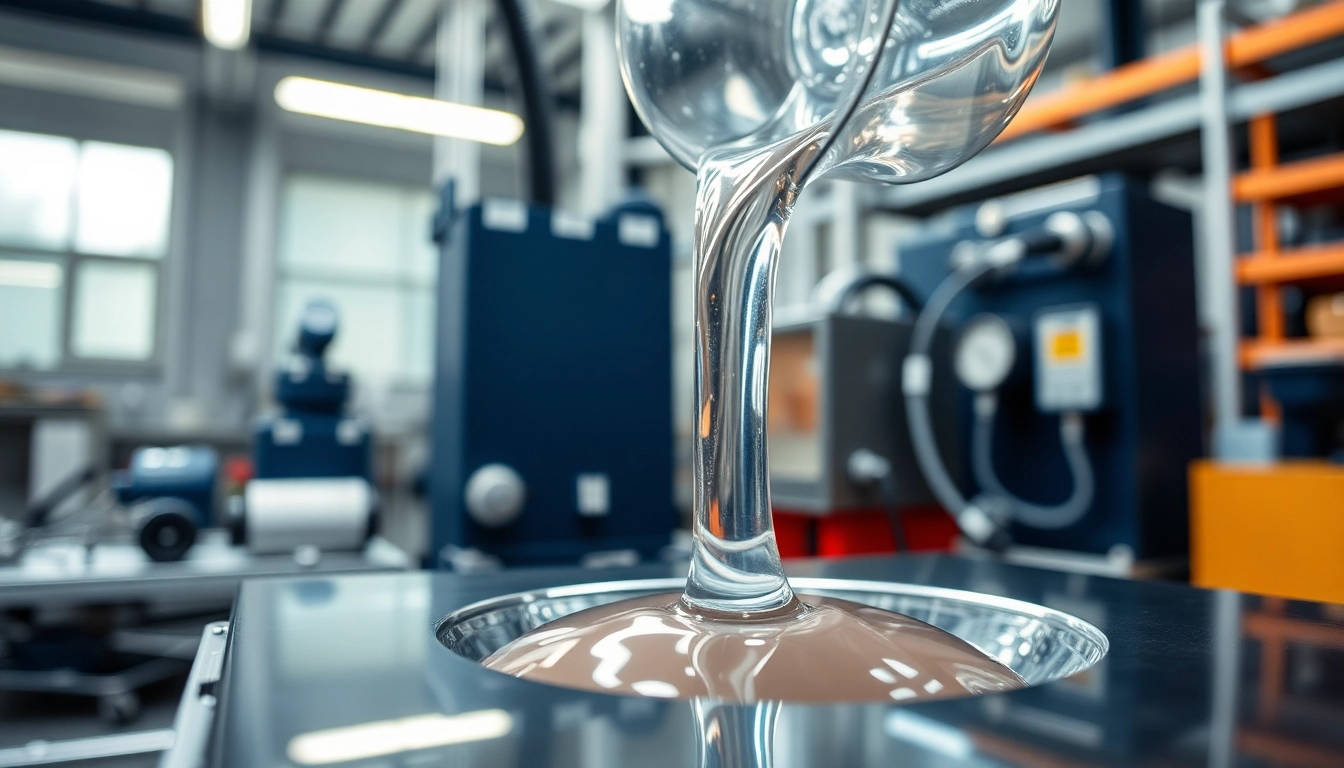Introduction to Infusion Resins
In the realm of advanced composite manufacturing, infusion resins play a pivotal role, enabling the creation of lightweight yet strong composite structures. These resins are specially formulated to meet the rigorous demands of various applications across industries. With their unique properties and advancements in material science, infusion resins stand out as a superior choice for engineers and manufacturers alike.
What Are Infusion Resins?
Infusion resins are low-viscosity synthetic resins specifically designed for use in infusion processes, where automotive, aerospace, marine, and other industries require high-performance materials. The infusion method typically involves placing dry reinforcement materials in a mold, followed by drawing a vacuum to eliminate air and releasing the liquid resin to saturate the fibers. This process allows for the production of composite parts with exceptional mechanical properties and surface quality.
Applications and Industries Utilizing Infusion Resins
The versatility of infusion resins leads to their widespread utilization across a multitude of industries, including:
- Aerospace: Infusion resins enable the creation of lightweight aircraft components that meet stringent safety standards.
- Automotive: They are used in manufacturing car parts that require substantial strength while minimizing weight to enhance fuel efficiency.
- Marine: Infusion resins are essential in building high-performance boats and yachts, providing durability and resistance to harsh environmental conditions.
- Wind Energy: The wind energy sector relies on infusion resins to create large, robust turbine blades that are both lightweight and structurally sound.
- Sports Equipment: From bicycles to surfboards, infusion resins are integral in crafting high-performance sports gear.
Benefits of Using Infusion Resins
The advantages of infusion resins over conventional resin systems make them a preferred choice for many applications:
- Reduced Viscosity: Their low viscosity allows for better flow and penetration through fiber fabrics, ensuring complete saturation without trapping air bubbles.
- Improved Mechanical Properties: Infusion resins often exhibit superior strength and stiffness, which are vital for structural applications.
- Enhanced Surface Finish: The infusion process results in a smooth and clean surface finish, reducing the need for extensive post-processing.
- Controlled Cure Times: These resins can be formulated to cure at controlled rates, allowing for better management of production schedules.
Key Characteristics of Infusion Resins
Viscosity and Flow Properties
Viscosity is a critical factor in resin infusion processes. Infusion resins are engineered to have low viscosity, which facilitates easy flow into complex mold geometries. The successful infusion is dependent on the resin’s ability to wet out the fibers and eliminate voids, ensuring optimal fiber-to-resin ratios. Properties such as pot life and cure time can be tailored by adjusting the formulation, enhancing their adaptability to various manufacturing processes.
Thermal and Mechanical Strength
Infusion resins are formulated to withstand demanding thermal and mechanical challenges. They typically provide high glass transition temperatures (Tg), which is essential for applications where elevated temperatures are a concern. Additionally, the mechanical strength of composite parts made with infusion resins can surpass those made with traditional methods, making them ideal for structural applications.
Environmental Considerations
As industries shift towards sustainable practices, the development of eco-friendly infusion resins has gained traction. Formulations featuring bio-based materials minimize environmental impact while maintaining high performance. By reducing the carbon footprint associated with the production of infusion resins, manufacturers can achieve sustainability goals without compromising quality.
Application Techniques for Infusion Resins
Preparing the Mold for Infusion
The first step in the infusion process is preparing the mold, which must be clean, correctly sized, and designed to accommodate the resin flow. Mold release agents are applied to ensure easy part removal post-curing. Properly placing and securing the reinforcement fabric within the mold is critical to achieving desired structural integrity.
Vacuum Bagging Process
Vacuum bagging is a method that helps draw the resin into the reinforcement and remove voids. By applying a vacuum, pressure is created that facilitates the resin flow throughout the laminate. It’s vital to monitor vacuum levels throughout the process to ensure consistent resin infusion and avoid issues like resin starvation or improper curing.
Post-Infusion Curing Methods
Post-infusion curing is crucial for achieving the final properties of the infused part. Depending on the resin formulation, curing can occur at room temperature or require elevated temperatures. Maintaining the correct temperature and curing time is essential for ensuring optimal mechanical properties and achieving the desired finish.
Choosing the Right Infusion Resins
Identifying Project Requirements
When selecting infusion resins, it is crucial to evaluate the specific requirements of the project, including the intended application, environmental conditions, and performance needs. For instance, aerospace parts may necessitate resins that offer higher tensile strength and thermal stability compared to those used in consumer products. Understanding these criteria helps in making an informed choice.
Comparing Different Resin Formulations
Different formulations of infusion resins exist, each optimized for particular applications. Factors such as viscosity, cure rate, and mechanical properties should be compared. Additionally, performance characteristics such as impact resistance and thermal stability should be evaluated against project needs. Choosing the right formulation is critical to ensuring that the end product meets specified standards.
Supplier Considerations and Sourcing
Choosing a reliable supplier for infusion resins can significantly impact the success of a project. Factors to consider include the quality of materials, consistency of supply, technical support, and pricing. Collaborating with suppliers who have a robust understanding of the infusion process can yield valuable insights and assistance, facilitating a more smooth production process.
Future Trends in Infusion Resins Technology
Advancements in Material Science
The field of material science is constantly evolving, leading to the development of new resin types and formulations. Innovations such as nanomaterials and additives aim to enhance the properties of infusion resins, including their strength, heat resistance, and environmental stability. These advancements hold the potential to revolutionize industries reliant on composites.
Sustainability and Bio-based Infusion Resins
With growing concerns about environmental sustainability, the demand for eco-friendly infusion resins is on the rise. Manufacturers are exploring bio-based resins derived from renewable resources as alternatives to conventional petrochemical-derived resins. These materials not only reduce carbon emissions but also appeal to consumers seeking sustainable products.
Integration with Automated Manufacturing Processes
The integration of infusion resin technology with automated processes represents a significant trend for the future. Automation can enhance efficiency, improve repeatability, and reduce labor costs. The use of robotics in the layup process and resin application could also lead to more precise control over material placement and flow dynamics, resulting in higher-quality composite parts.


